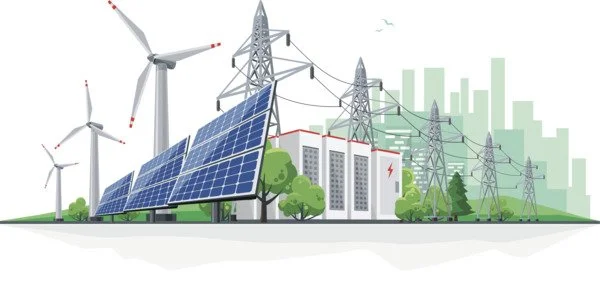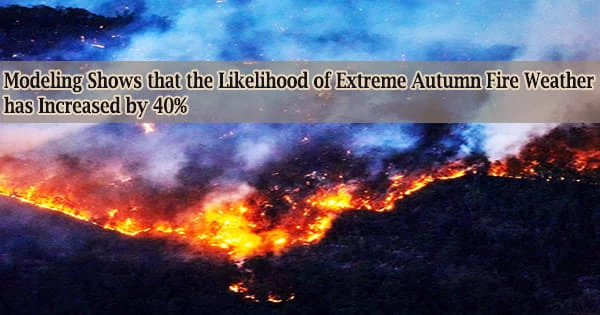According to a new study, decarbonization pathways should include more efficient electric heating technologies and renewable energy sources to reduce strain on the U.S. electric grid during peak electricity usage from heating in the winter.
Direct fossil fuel consumption by buildings, as used in water heaters, furnaces, and other heating sources, accounts for nearly 10% of greenhouse gas emissions in the United States. Switching to an electric system that powers heating with renewable energy sources rather than coal, oil, and natural gas – a process known as building electrification or building decarbonization – is a critical step toward achieving global net-zero climate goals.
Most building decarbonization models, however, have not taken into account seasonal variations in energy demand for heating or cooling. This makes predicting the impact of a future switch to cleaner, all-electric heating in buildings on the nation’s electrical grid difficult, particularly during peak energy use periods.
Researchers from Boston University School of Public Health (BUSPH), Harvard T.H. Chan School of Public Health (Harvard Chan School), Oregon State University (OSU), and the nonprofit Home Energy Efficiency Team (HEET) investigated these seasonal changes in energy demand and discovered that monthly energy consumption varies significantly and is highest in the winter months.
Our research reveals the degree of fluctuation in building energy demand as well as the benefits of using extremely efficient heating technologies when electrifying buildings. This work really shows that technologies on both the demand and the supply side have a strong role to play in decarbonization.
Dr. Jonathan Buonocore
The findings emphasize the need for buildings to install more efficient home-heating technologies, such as ground source heat pumps.
“Our research reveals the degree of fluctuation in building energy demand as well as the benefits of using extremely efficient heating technologies when electrifying buildings,” says Dr. Jonathan Buonocore, Assistant Professor of Environmental Health at BUSPH.
Buonocore and colleagues analyzed building energy data from March 2010 to February 2020 for the study, and discovered that the US total monthly average for energy consumption varies by a factor of 1.6x, with the lowest demand in May and the highest demand in January, based on current use of fossil fuels as well as future use of electricity in the winter.
The researchers used what they call the “Falcon Curve” to model these seasonal fluctuations, because a graph of the change in monthly energy consumption resembles the shape of a falcon. Winter heating demand drives energy consumption to its highest levels in December and January, with a secondary peak due to cooling in July and August, and the lowest levels in April, May, September, and October, according to the data.
The researchers also calculated how much more renewable energy, specifically wind and solar energy, would need to be generated to meet the increased demand for electricity. Without storage, demand response, or other grid load management strategies, buildings would require a 28x increase in January wind generation or a 303x increase in January solar energy to meet winter heating peaks.
Buildings would only require 4.5x more winter wind generation or 36x more solar energy with more efficient renewables, such as air source heat pumps (ASHPs) or ground source heat pumps (GSHPs), thus “flattening” the Falcon Curve as less new energy demand is placed on the electrical grid.

“This work really shows that technologies on both the demand and the supply side have a strong role to play in decarbonization,” says study coauthor Dr. Parichehr Salimifard, Assistant Professor of College of Engineering at Oregon State University. Examples of these technologies on the energy supply side are geothermal building heating and renewable energy technologies that can provide energy at all hours, she says — such as renewables coupled with long-term storage, distributed energy resources (DERs) at all scales, and geothermal electricity generation where possible.
“The Falcon Curve draws our attention to a critical relationship between building electrification technology selection and the impact of building electrification on our power grid,” says study coauthor Zeyneb Magavi, co-executive director of HEET, a non-profit climate solutions incubator.
Magavi cautions that this study has yet to quantify this relationship based on measured seasonal efficiency curves for specific technologies, or for more granular time scales or regions, or to assess the numerous strategies and technologies that can help address the challenge. All of this must be taken into account when planning for decarbonization.
Yet, Magavi says, this research clearly does indicate that, “Using a strategic combination of heat pump technologies (air-source, ground-source, and networked), as well as long-term energy storage, will help us electrify buildings more efficiently, economically, and equitably. The Falcon curve shows us a faster path to a clean, healthy energy future.”
“Our research shows that, when seasonal fluctuations in energy consumption are taken into account, the drive to electrify our buildings must be coupled with a commitment to energy-efficient technologies to ensure building decarbonization efforts maximize climate and health benefits,” says study senior author Dr. Joseph G. Allen, Associate Professor of Exposure Assessment Science and Director of the Healthy Buildings program at Harvard Chan School of Public Health.
“Our work here shows a pathway for building electrification that avoids relying on fossil fuels and avoids renewable combustion fuels, which, despite being climate neutral, can still produce air pollution and possibly perpetuate disparities in air pollution exposure,” says Buonocore. “It is critical for public health experts to be involved in energy and climate policymaking to avoid issues like this.”
















